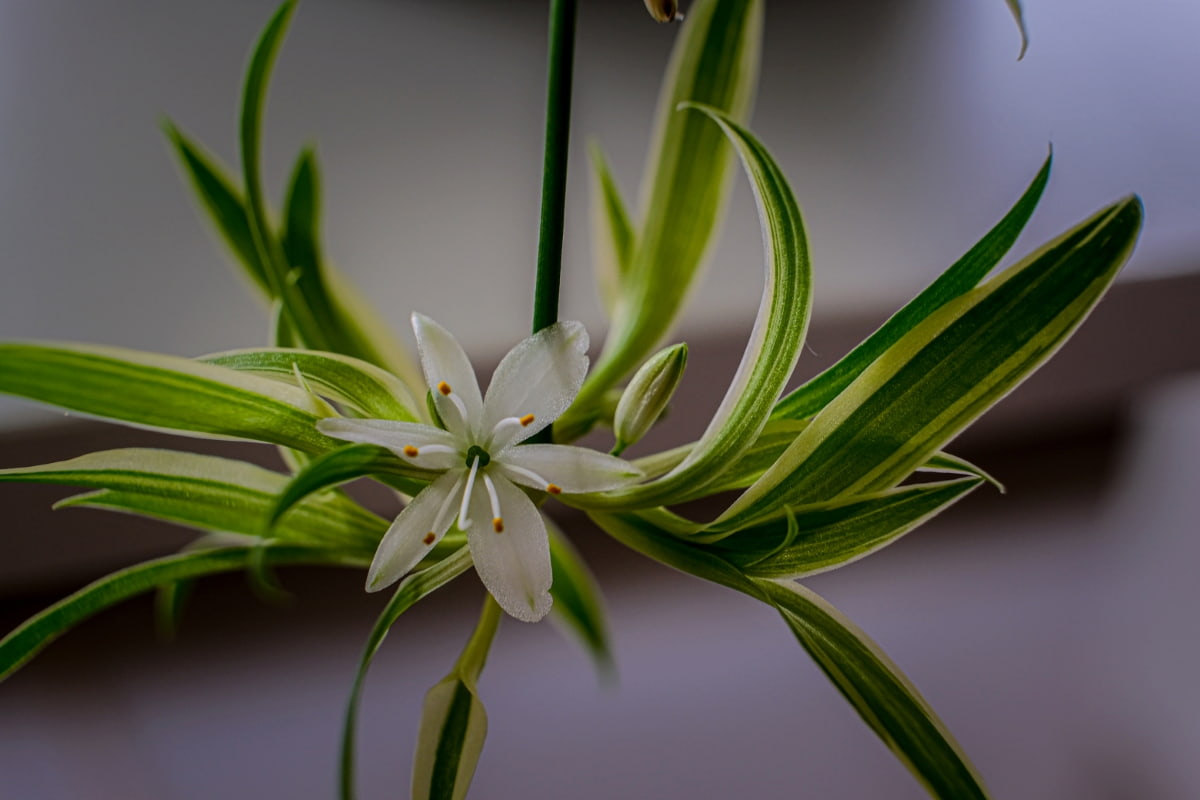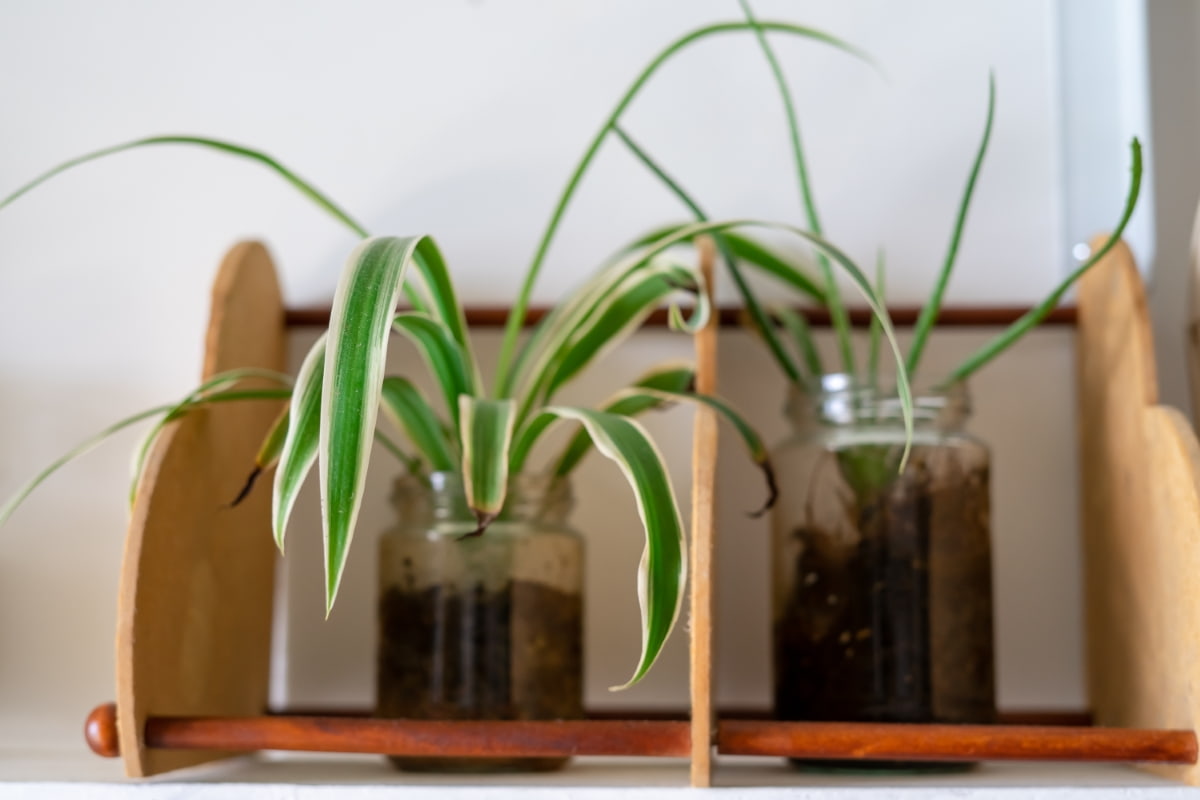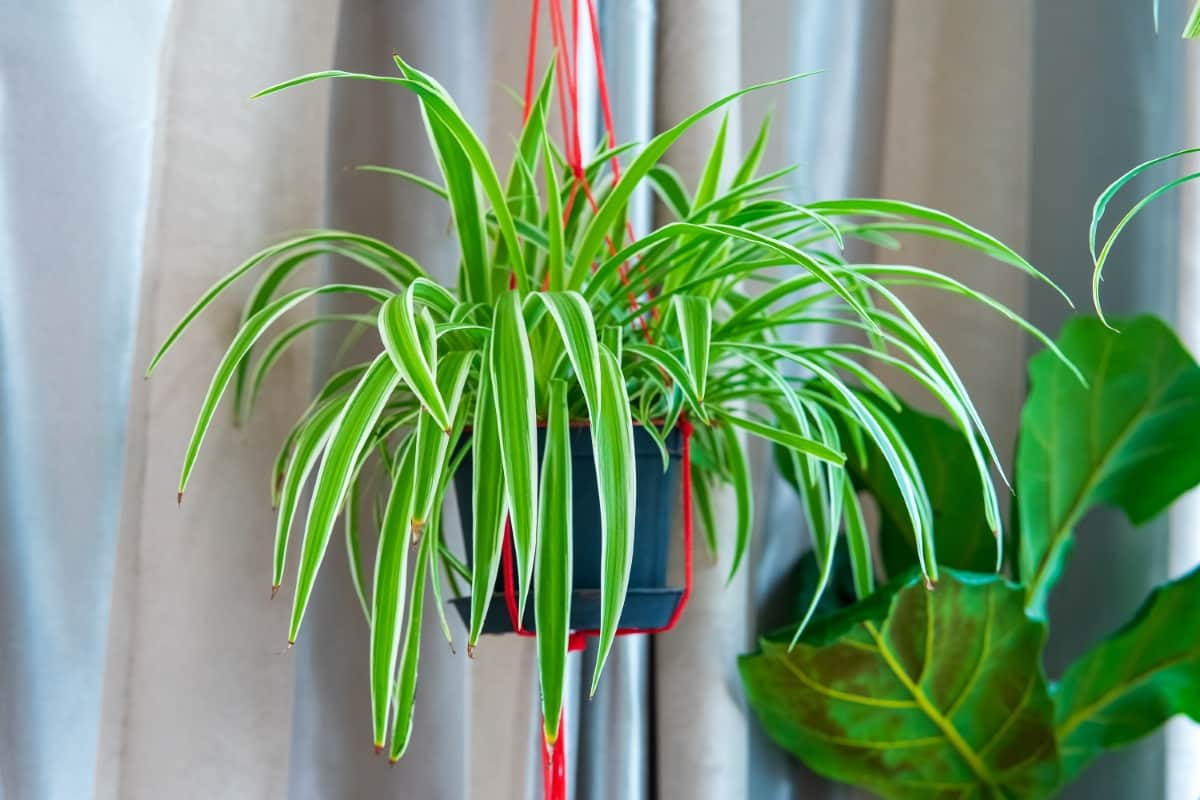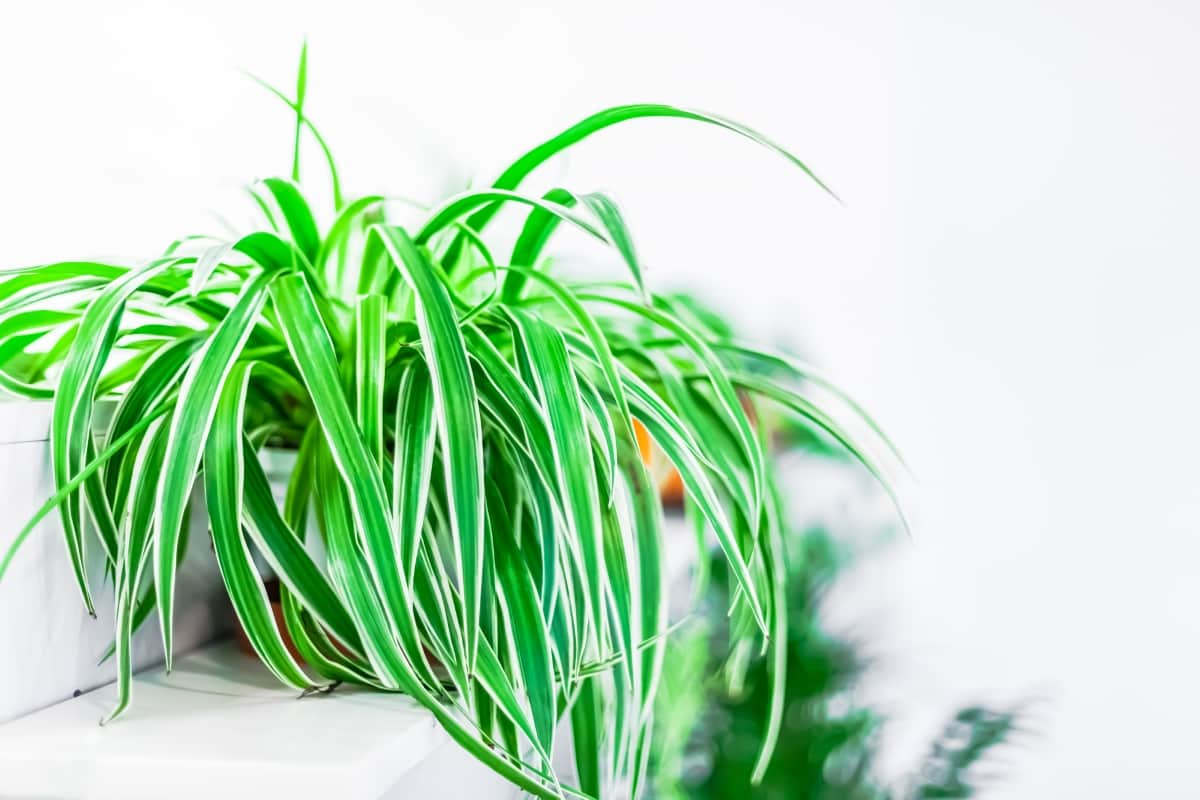Spider plants (Chlorophytum comosum) are popular houseplants known for their graceful arching leaves and ability to purify indoor air. However, like any living organism, spider plants can encounter various problems that hinder their growth and vitality. In this blog, we will explore common issues that spider plants face and provide natural solutions to address them effectively.

Natural Ways to Fix Common Spider Plant Problems
Understanding Spider Plant Problems
Yellowing Leaves
- Cause: Overwatering, underwatering, or direct sunlight.
- Solution: Adjust the watering schedule, ensure proper drainage, and provide indirect sunlight.
Brown Tips
- Cause: Dry air, low humidity, or chemical exposure.
- Solution: Increase humidity levels, mist leaves regularly, and avoid exposing the plant to chemicals.
Spiderettes Not Developing
- Cause: Lack of nutrients or inadequate light.
- Solution: Fertilize regularly using organic options, ensure sufficient light exposure, and consider repotting if necessary.
Root Rot
- Cause: Overwatering or poor drainage.
- Solution: Allow the soil dry out between waterings, improve drainage by adding perlite or sand to the soil mix, and repot if needed.
Pests
- Common Pests: Spider mites, aphids, and mealybugs.
- Solution: To control pests, use natural remedies like neem oil, insecticidal soap, and mixture of water and dish soap.
Prevention and Maintenance
Watering
Tips for proper watering: Check soil moisture before watering, use room-temperature water, and water thoroughly until the water drains from the bottom.
Light Requirements
- Ideal light conditions: Bright, indirect sunlight or moderate shade.
- Avoid exposing to direct sunlight, which can scorch the leaves.
Soil and Fertilization
- Soil requirements: Well-draining potting mix with good aeration.
- Fertilize regularly with organic options like compost tea or diluted liquid fertilizer.
Humidity
- Optimal humidity levels: 40-50%.
- Increase humidity by placing near the plant, misting the leaves, or using a humidifier.
Pruning and Propagation
- Remove yellow or diseased leaves promptly.
- Propagate spider plants by replanting spider plants and rooting stem cuttings in water or soil.
In case you missed it: Ultimate Guide to Managing Peacock Plant Pests and Diseases: Prevention and Treatment

Troubleshooting Additional Issues
Stunted Growth
- Cause: Lack of nutrients, inadequate light, or overcrowded roots.
- Solution: Fertilize regularly, provide sufficient light, and consider repotting if roots are congested.
Leaf Browning or Curling
- Cause: Exposure to cold drafts, low temperatures, or inconsistent watering.
- Solution: Keep the plant away from cold drafts, maintain a consistent temperature, and water regularly.
Fading Leaf Color
- Cause: Insufficient light or nutrient deficiency.
- Solution: Move the plant to sunny brighter location, fertilize regularly, and ensure proper watering.
Brown Leaf Tips
Brown leaf tips can occur due to low humidity, over-fertilization, or fluoride in tap water. Increasing humidity, using distilled water, and moderating fertilizer use can prevent this issue.
- Yellow Leaves: Yellowing leaves may indicate overwatering or poor drainage. Ensuring proper watering routines and well-draining soil can address this problem.
- Root Rot: Root rot is often caused by overwatering. To manage root rot, reduce watering frequency, and improve soil drainage.
- Pests Infestations: Common pests like spider mites, bugs and aphids can be managed using natural insecticides or by introducing beneficial insects will help that prey on these pests.
- Slow Growth: Slow growth could be due to inadequate light or nutrients. Providing bright, indirect light and balanced fertilization can encourage growth.
- Leaf Drop: Drops might happen with sudden temperature changes or drafts. Keeping the plant in a stable environment will help prevent leaves from dropping.
In case you missed it: Top 10 Indoor Plant Pest Control Sprays: DIY Homemade Spray for Bug Repellent

- White Spots on Leaves: White spots can be a sign of powdery mildew. Increasing air circulation and reducing leaf wetness can help manage this fungal issue.
- Leggy Growth: Leggy growth indicates insufficient light. Moving the plant to a Sunny, brighter location should promote fuller growth.
- Wilting Plants: Wilting is often a sign of underwatering or root damage. Regular watering and checking for root health are essential.
- Faded or Bleached Leaves: Leaves that appear faded or bleached may be receiving too much direct sunlight. Providing filtered light will protect the plant from harsh rays.
- Brown or Black Spots on Leaves: These spots are typically caused by fungal infections or physical damage. Removing affected leaves and avoiding overhead watering can prevent further spread.
- Leaf Scorching: Leaf scorching occurs when the plant is exposed to extreme heat or direct sunlight. To avoid scorching, keep the plant at moderate temperatures.
In case you missed it: 10 Homemade Pesticides for Tulsi: Ways to Get Rid of Bugs Naturally from Holy Basil Plant

Conclusion
Spider plants are easy to care for, but they can occasionally encounter problems. By understanding the causes and implementing natural solutions, you can help your spider plant thrive and maintain its beauty. Remember to provide the right conditions, monitor watering, address pest issues promptly, and follow proper maintenance practices.
- Beneficial Insects in Pest Management
- Natural Solutions for Pest Control in Flower Gardens
- Types of Fungicides Used in Agriculture
- Common Issues in the Fruit Development Stage of Pomegranate Farming
- Fruit Development Issues in Papaya: Easy Solutions and Treatment
- Soil-Borne Diseases and How to Protect Your Plants
- Practices to Prevent Disease Spread in the Garden
- From Wilted to Thriving: How to Treat Root Rot Naturally in Houseplants
- Natural Remedies to Cure Brown Spots on Fig Tree Leaves